A Smarter Solution to IP Protection: Building an Image-based Trademark Similarity Search System
This article is transcreated by Angela Ni.
In recent years, the issue of IP protection has come under the limelight as people's awareness of IP infringement is ever-increasing. Most notably, the multi-national technology giant Apple Inc. has been actively filing lawsuits against various companies for IP infringement, including trademark, patent, and design infringement. Apart from those most notorious cases, Apple Inc. also disputed a trademark application by Woolworths Limited, an Australian supermarket chain, on the grounds of trademark infringement in 2009. Apple. Inc argued that the logo of the Australian brand, a stylized "w", resembles their own logo of an apple. Therefore, Apple Inc. took objection to the range of products, including electronic devices, that Woolworths applied to sell with the logo. The story ends with Woolworths amending its logo and Apple withdrawing its opposition.

Logo of Woolworths.

Logo of Apple Inc.
With the ever-increasing awareness of brand culture, companies are keeping a closer eye on any threats that will harm their intellectual properties (IP) rights. IP infringement includes:
- Copyright infringement
- Patent infringement
- Trademark infringement
- Design infringement
- Cybersquatting
The aforementioned dispute between Apple and Woolworths is mainly over trademark infringement, precisely the similarity between the trademark images of the two entities. To refrain from becoming another Woolworths, an exhaustive trademark similarity search is a crucial step for applicants both prior to the filing as well as during the review of trademark applications. The most common resort is through a search on the United States Patent and Trademark Office (USPTO) database that contains all of the active and inactive trademark registrations and applications. Despite the not so charming UI, this search process is also deeply flawed by its text-based nature as it relies on words and Trademark Design codes (which are hand annotated labels of design features) to search for images.
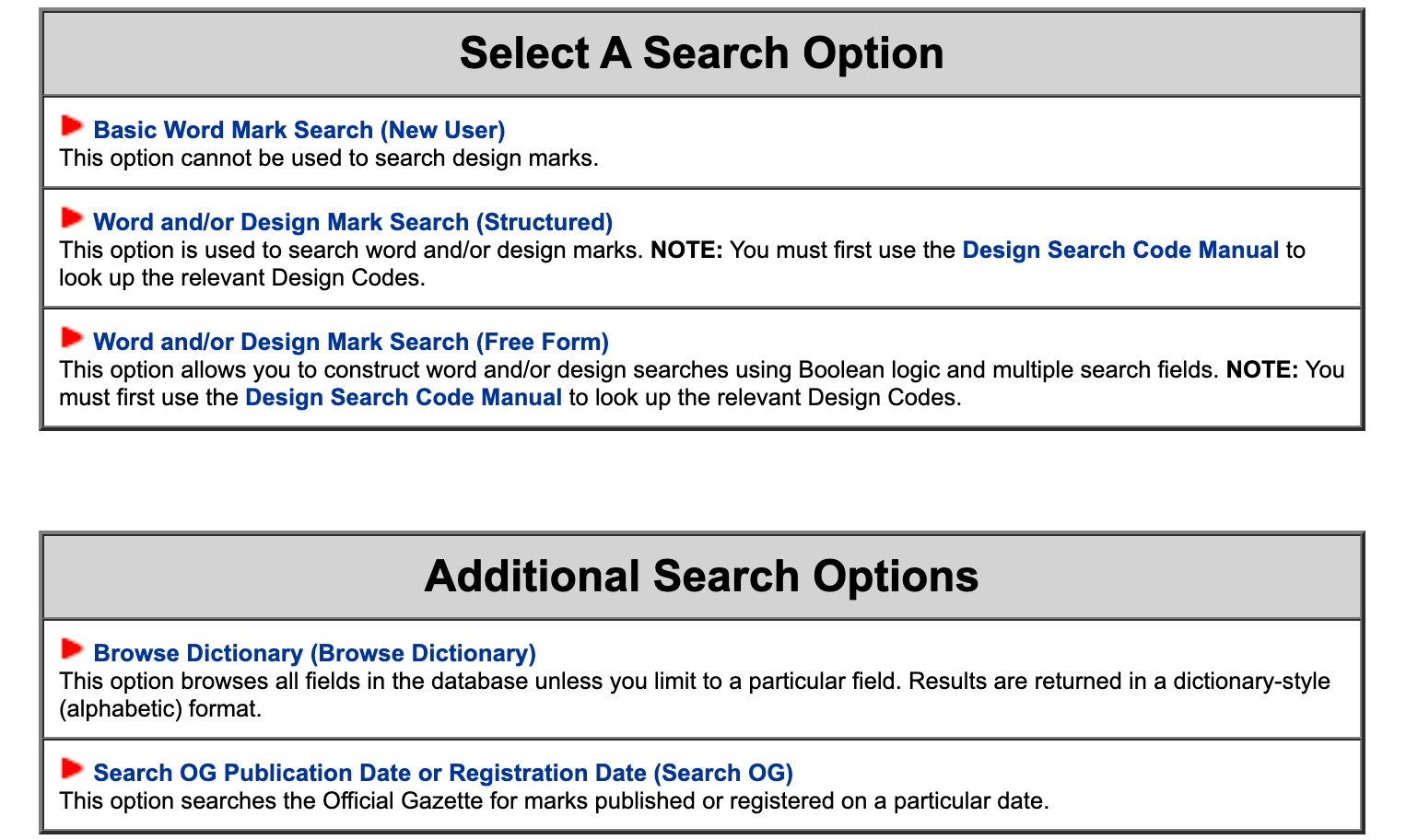
The text-based trademark search options offered by the Trademark Electronic Search System (TESS).
This article intends to explain how to build a vector similarity search system for trademarks using Milvus, an open-source vector database.
A vector similarity search system for trademarks
To build a vector similarity search system for trademarks, you need to go through the following steps:
- Prepare a massive dataset of logos. Likely, the system can use a dataset like this.
- Train an image feature extraction model using the dataset and data-driven models or AI algorithms.
- Convert logos into vectors using the trained model or algorithm in step 2.
- Store the vectors and conduct vector similarity searches in Milvus, the open-source vector database.
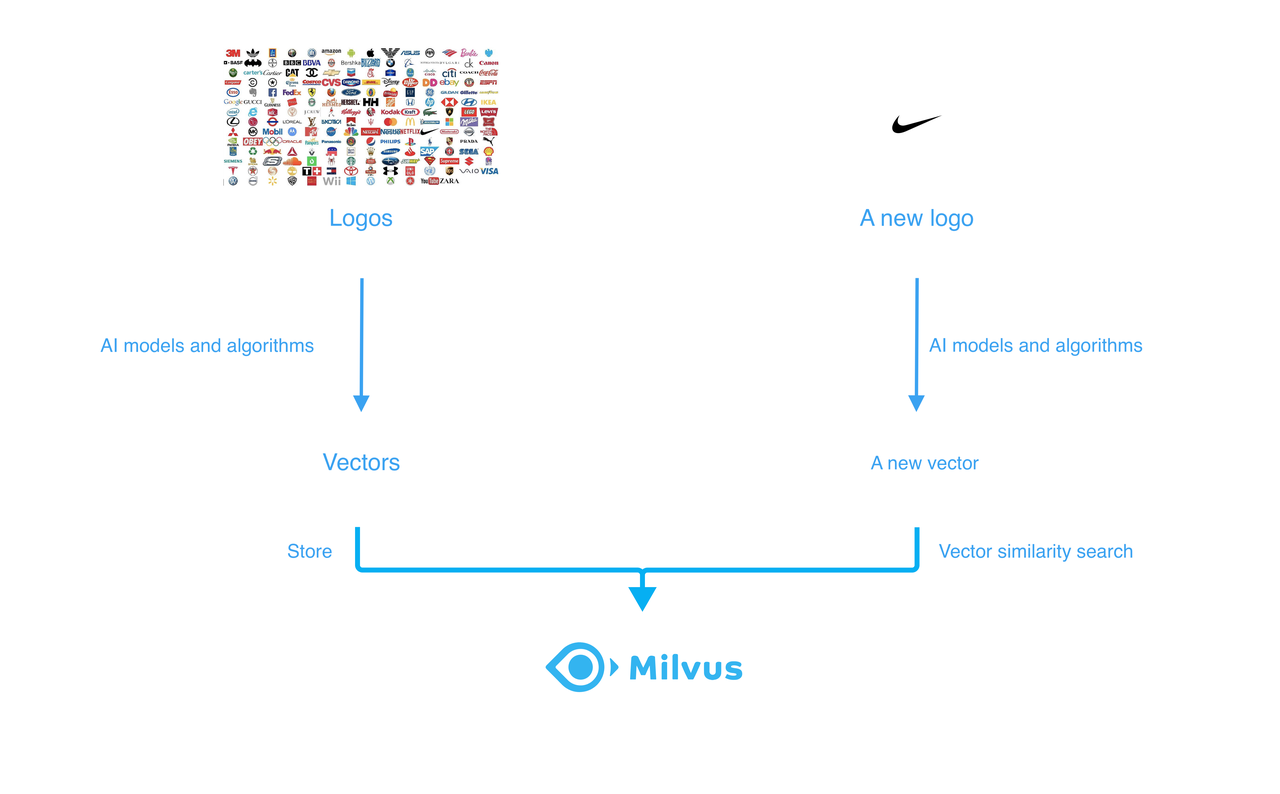
The workflow of trademark similarity search system.
To accelerate the process of feature extraction, you can deploy the trained AI model on multiple servers. However, you do not have to worry about data inconsistency if you use distributed service to process data because you can use Flask to ensure synchronized data processing.
When the system is built, your user only needs to upload an image of a logo, and then the system converts this new image into a new vector using the same AI model you trained. The system searches for similar vectors to the new vector in the Milvus database and returns the corresponding vector IDs. Ultimately, your user will be able to see all the results of similar logos to the one he or she has uploaded. The following screenshot is a demonstration of a vector similarity search system for trademarks. As you can see, the user uploaded the logo, the swoosh, of the sportswear brand Nike. The system returns all images that are similar to this logo.
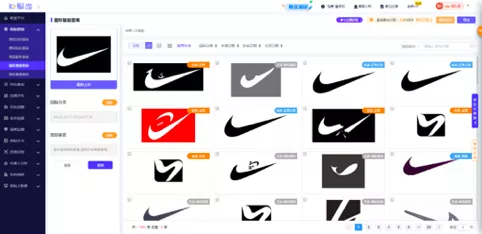
A demo of the trademark similarity search system.
In the following sections, let's take a closer look at the two major steps in building a vector similarity search system for trademarks: using AI models for image feature extraction, and using Milvus for vector similarity search. In our case, we used VGG16, a convolutional neural network (CNN), to extract image features and convert them into embedding vectors.
Using VGG16 for image feature extraction
VGG16 is a CNN designed for large-scale image recognition. The model is quick and accurate in image recognition and can be applied to images of all sizes. The following are two illustrations of the VGG16 architecture.

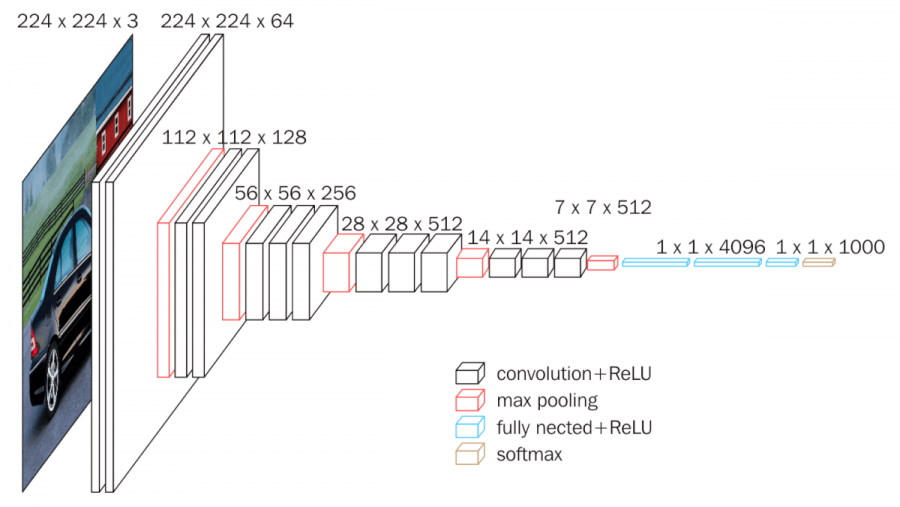
The VGG16 architecture.
The VGG16 model, as its name suggests, is a CNN with 16 layers. All VGG models, including VGG16 and VGG19, contain 5 VGG blocks, with one or more convolutional layers in each VGG block. And at the end of each block, a max pooling layer is connected to reduce the size of the input image. The number of kernels is equivalent within each convolutional layer but doubles in each VGG block. Therefore, the number of kernels in the model grows from 64 in the first block, to 512 in the fourth and fifth blocks. All the convolutional kernels are 33-sized while the pooling kernels are all 22-sized. This is conducive to preserving more information about the input image.
Therefore, VGG16 is a suitable model for image recognition of massive datasets in this case. You can use Python, Tensorflow, and Keras to train an image feature extraction model on the basis of VGG16.
Using Milvus for vector similarity search
After using the VGG16 model to extract image features and convert logo images into embedding vectors, you need to search for similar vectors from a massive dataset.
Milvus is a cloud-native database featuring high scalability and elasticity. Also, as a database, it can ensure data consistency. For a trademark similarity search system like this, new data like the latest trademark registrations are uploaded to the system in real time. And these newly uploaded data need to be available for search immediately. Therefore, this article adopts Milvus, the open-source vector database, to conduct vector similarity search.
When inserting the logo vectors, you can create collections in Milvus for different types of logo vectors according to the International (Nice) Classification of Goods and Services_Classification_of_Goods_and_Services), a system of classifying goods and services for registering trademarks. For example, you can insert a group of vectors of clothing brand logos into a collection named "clothing" in Milvus and insert another group of vectors of technological brand logos into a different collection named "technology". By doing so, you can greatly increase the efficiency and speed of your vector similarity search.
Milvus not only supports multiple indexes for vector similarity search, but also provides rich APIs and tools to facilitate DevOps. The following diagram is an illustration of the Milvus architecture. You can learn more about Milvus by reading its introduction.
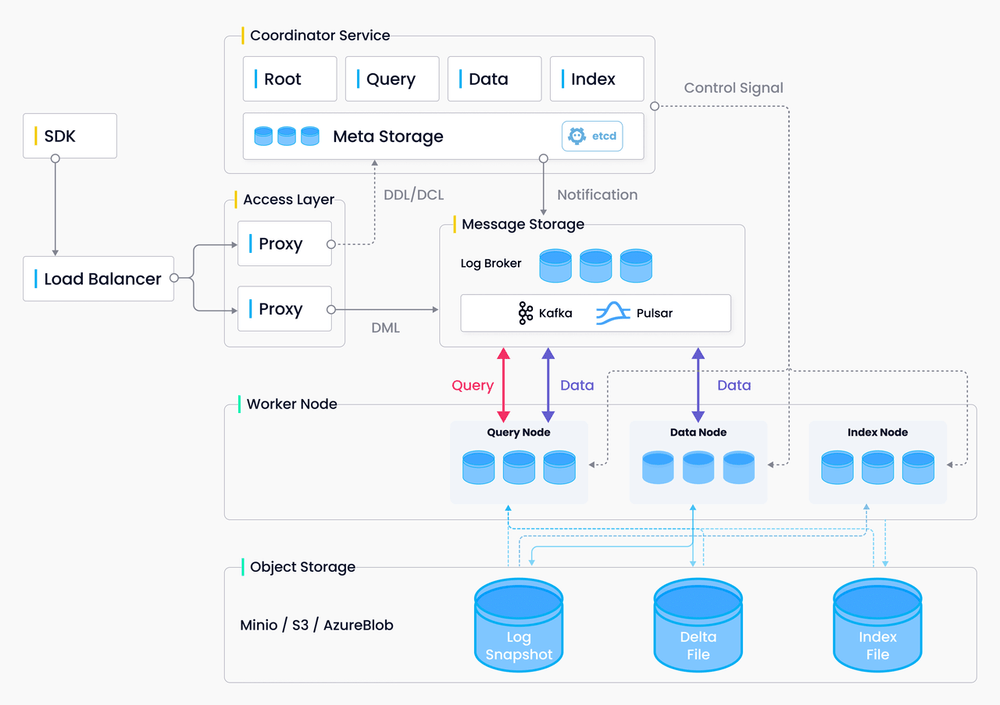
The Milvus architecture.
更多推荐
 已为社区贡献27136条内容
已为社区贡献27136条内容








所有评论(0)